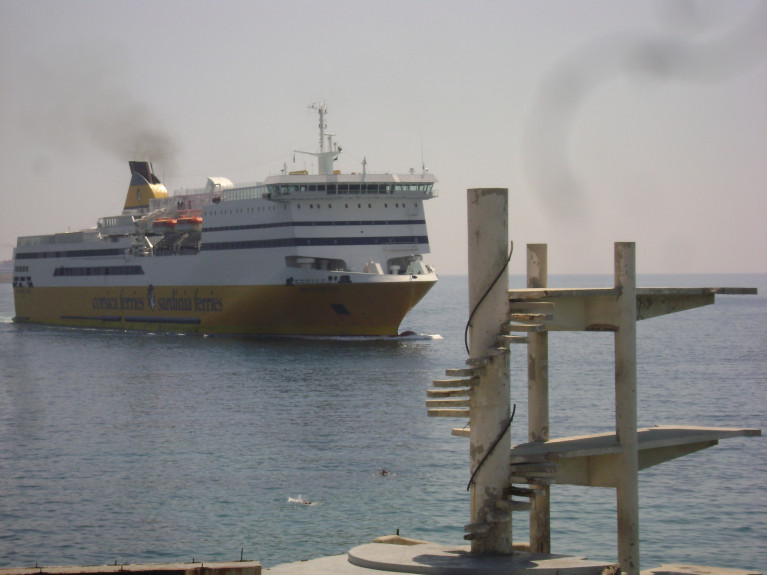Displaying items by tag: ICG charter
ICG Charter Ship from Mediterranean for Irish Ferries Overhaul Dry-Dockings
Irish Continental Group has chartered a ship from Corsica Ferries, to provide routine annual overhaul cover over the winter season for their division Irish Ferries, writes Jehan Ashmore.
Mega Express Four during its Mediterranean Sea career had been normally on France-Corsica routes among them out of Nice, however, Afloat tracked the ferry off Portugal during its repositioning voyage from Vado Ligure close to Savona, Italy.
This morning Mega Express Four had completed the repositioning voyage in Holyhead so to enable berthing trials. The ferry is to depart the north Wales port for Dublin from where it is to arrive tomorrow for further trials and remain in port during the weekend.
According to the Irish Ferries website, Mega Express Four will take up Dublin-Holyhead service next Monday. Ulysses will not operate on two sailings next Monday and is expected to go off service from the Ireland-Wales route and head for dry-docking.
The chartered ferry built-in 1995 as Superfast II, first-served Superfast Ferries on Greece-Italy routes. Originally, there were 12 custom-built ships with the 'Superfast' naming theme, though of varying naval architect designs. Some ships served in northern Europe.
Mega Express Four also operated for new owners on Australian waters linking Tasmania before returning to Europe in 2006 for the current Corsican based operator.
When Mega Express Four enters service, this will be the fifth 'Superfast' ferry to operate from the island of Ireland as a pair of Stena sisters, retaining in part their original name, Stena Superfast's VII/VIII that link the Belfast-Cairnryan route.
Superfast V became Brittany Ferries Cape Finistere recently introduced initially on both Rosslare routes to Cherbourg and Spain, until Connemara took charge of connecting the French port this month.
The fifth 'Superfast' named ferry to run on the Irish waters was the Stena Superfast X, which in recent years departed the Dublin-Holyhead route to began a new career in the Mediterranean and coincidentally running for a rival operator of Corsica Ferries.
In addition the arrival of the chartered ferry sees the Dublin-Holyhead timetable include W.B. Yeats after a final round trip this weekend on the Dublin-Cherbourg route takes place. The largest vessel in the fleet having begun four months earlier than scheduled on the Ireland-France link in response to boosting Brexit-Bypass freight demand.
When W.B. Yeats resumes service on the shorter Irish Sea route, Epsilon will directly take over crossings on the Dublin-Cherbourg route with a sailing taking place also on Monday.
It will be interesting to see if the Mega Express Four is deployed beyond the Irish Sea and possibly cover the route to mainland Europe.
As of today (Friday, 12 Feb) Afloat observed this morning the newcomer pass the Baily Lighthouse in Dublin Bay bound for the port.
While the final survivor of the original 12 ships, Superfast XI still operates for the same operator as the vessel runs between Patras-Igoumenitsa and Ancona. Though the Athens based ferry firm has other secondhand ships serving under the same naming theme.
























































